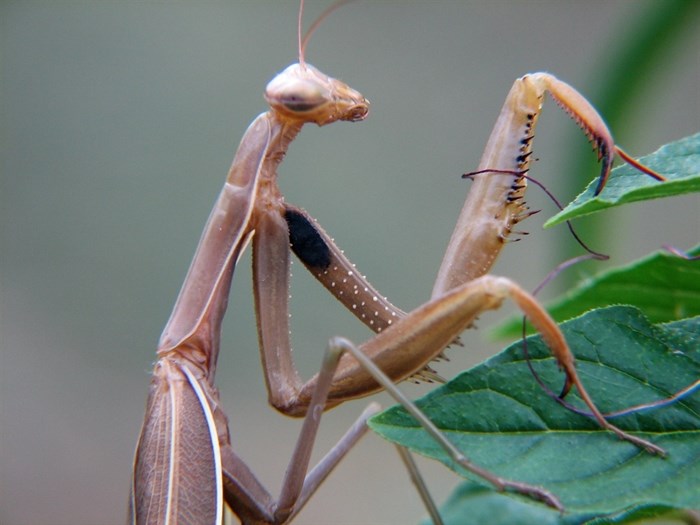
Praying Mantis.
Image Credit: Wikimedia Commons
September 19, 2020 - 11:30 AM
There's an odd fascination around here with creepy crawlies. Pay attention to any community forum long enough and you'll see someone post a photo of some critter that looks like something rejected from a Star Wars reboot, while everyone else either freaks out or tries to identify it. Perhaps it's because the Okanagan is mostly populated by people transplanted from elsewhere.
How many times have newcomers tried to call in authorities or warn us all because they just realized black widow spiders are plentiful here? Locals to the Thompson-Okanagan know we've got some special creatures here in semi-arid desert country (or close to it, if you're really particular about these things). But to test your knowledge, iNFOnews.ca we turned to UBCO associate professor and entomologist Bob Lalonde to see what he found interesting lurking in our backyards.
1) The snow scorpionfly. The name is scarier than the reality. It's not actually a scorpion, nor can it fly, but they do jump really well, Lalonde said. They get their name in part because their tails look similar to a scorpions but they don't bite or have venom. As adults, they live on the surface of the snow, so they can easily spot a mate. Lalonde said when you're only 5mm big and the nearest mate is five or 10 metres away, "it's like looking for the love of your life and they are at best 10 miles away." The insect is also featured on the logo of the Entomological Society of B.C.
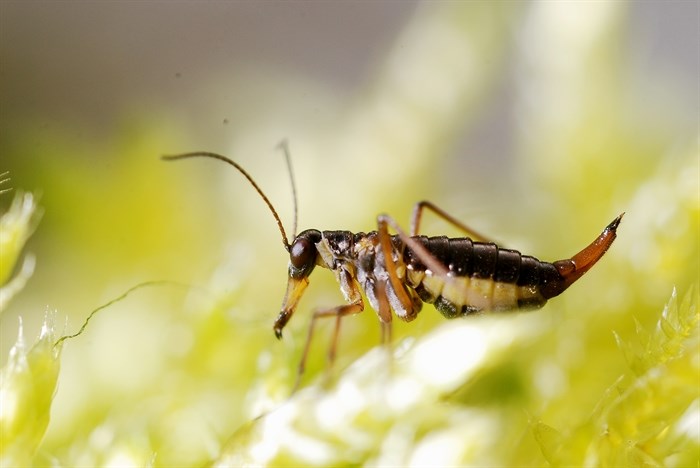
Snow scorpionfly.
Image Credit: Wikimedia Commons
2) Ant Lions. Their jaws look terrifying but are harmless unless you're an ant. Ant lions are "sit and wait" predators, who build pits that they use to trap wandering insects. The traps are similar to the pit Jabba the Hut uses at the beginning of Return of the Jedi, Lalonde says. "They sit at the bottom and wait for an insect to fall in... and essentially suck the juices right out of it. It's incredibly lurid but in miniature." Ant lions only grow to one centimetre in length. At a certain time in their life, they then metamorphose into a fly.
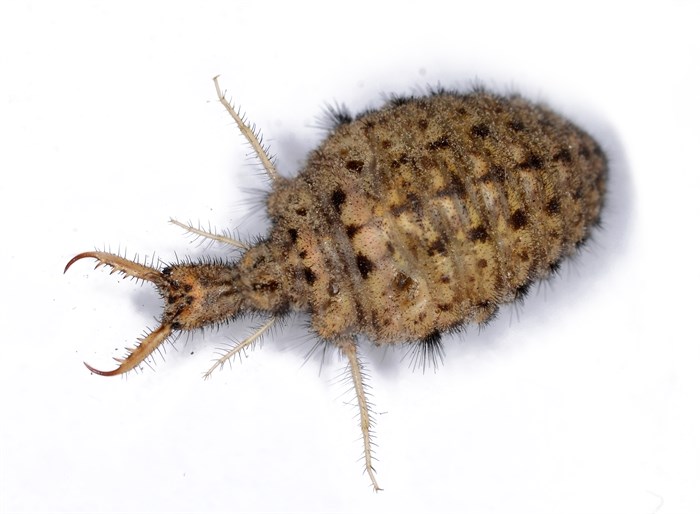
Ant Lion.
Image Credit: Wikimedia Commons
3) Praying Mantis. The photo is at the top. Introduced into the Okanagan in the 1920s in a "mistaken attempt by non-scientists at biological control" praying mantises don't have many predators and are quite common on the Okanagan. "Once they are adults they can fly but they are astonishingly bad at it," Lalonde said. They can grow to about 13 cm in length and if picked up will pinch with their legs and go to bite, but can't break the skin. It's commonly thought the female eats the male after copulation but Lalonde says this only happens "occasionally." The scientist says males are more likely to pick a female who doesn't look hungry, greatly increasing their chance of survival.
4) Blister beetle. The adults exude a chemical that can blister skin. "It's not a good idea to pick one of these up," Lalonde said. "The reason they do this is because they are very clumsy and very slow." Blister beetles grow to about 2.5 cm and if left alone won't bother you.
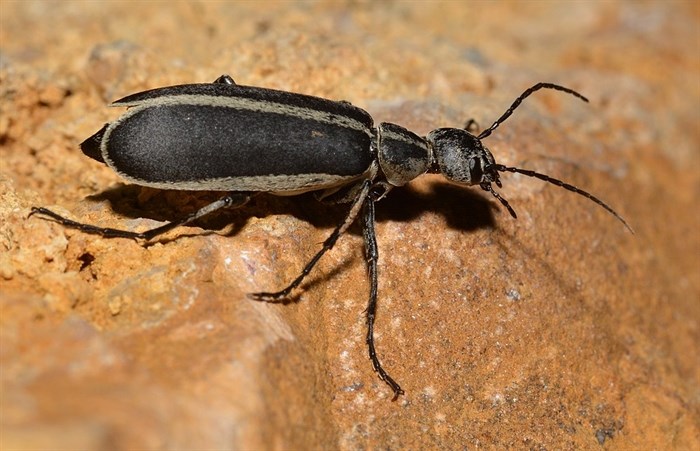
Blister beetle.
Image Credit: Wikimedia Commons
5) Solifugae. Also known as sun scorpion. Lalonde stresses this is not in his level of expertise - he studies insects, not spiders and the solifugae is an arachnid. They live in desert areas and aren't especially common in the Okanagan. Lalonde said, regardless of what the internet may say, in the Okanagan they would only grow to under four cm, and they are not venomous.
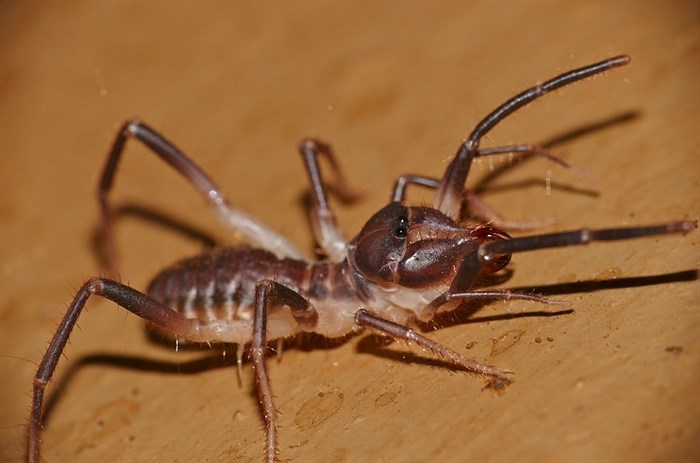
Solifugae.
Image Credit: Wikimedia Commons
BONUS CONTENT!
Fire ants. A species of ant originally introduced to New England in the 1900s, the ants have spread across North American but until relatively recently never made it into Canada. The Okanagan's climate should be too hot for the ants but some were discovered on a property in Naramata in the summer of 2013.
Brown marmorated stink bug. Another invasive species, originally from China, these specific stink bugs were first discovered in the Okanagan in 2015. Researchers set up "sticky traps” in 2017 and found relatively few of them around the Okanagan, with the exception of Kelowna. They found 1,000 downtown alone.
Pseudoscorpions. This little critter caused quite the stir on social media recently, but although it looks creepy only grows to about five millimetres in length and is harmless. While they do have a venom gland in their claws, it's so small it's only used to kill tiny mites.
Tarantuloids. That's right, we have black widows and a cousin of the tarantula. They're not very prevalent, nor very big and nothing to be afraid of, but they've been spotted enough times to make our list.
Tarantula Hawk. If we're going to annoy the arachnophobes, we should probably include this little guy that eats spiders and they do a darn fine job at it.
Have you found any odd critters creeping around? Be sure to send us photos at news@infonews.ca.
To contact a reporter for this story, email Ben Bulmer or call (250) 309-5230 or email the editor. You can also submit photos, videos or news tips to the newsroom and be entered to win a monthly prize draw.
We welcome your comments and opinions on our stories but play nice. We won't censor or delete comments unless they contain off-topic statements or links, unnecessary vulgarity, false facts, spam or obviously fake profiles. If you have any concerns about what you see in comments, email the editor in the link above.
News from © iNFOnews, 2020